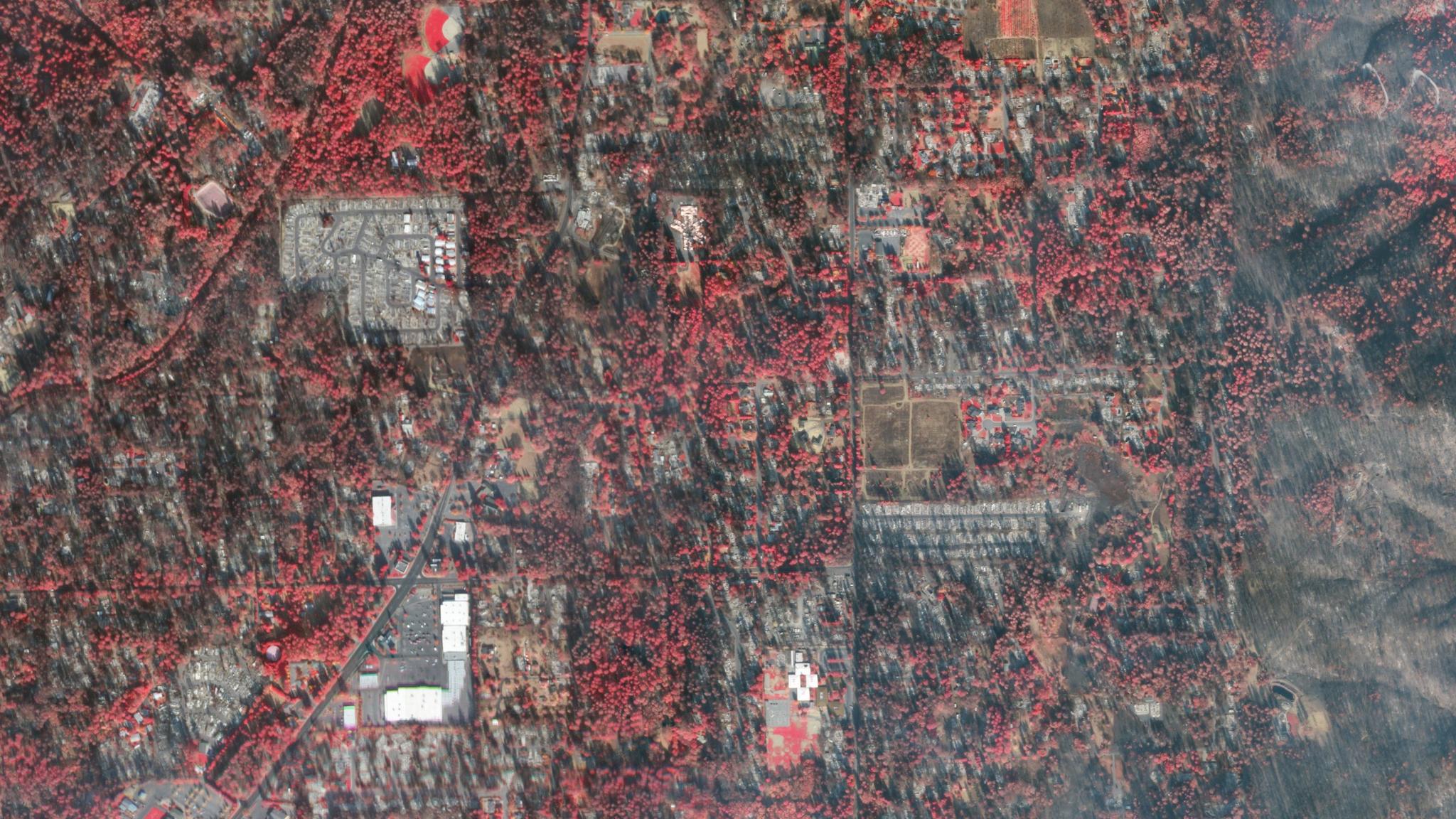Queryable Earth: combining satellite imagery and next-gen AI
By: Kevin Weil and Andrew Zolli
Back in 2018, Planet co-founder and CEO Will Marshall asked the audience during his TED talk: what if you could search the surface of the Earth the same way you search the internet?
It wasn’t science fiction. Using artificial intelligence (AI) and machine learning (ML) to index objects on the planet over time – which could make ships, trees, buildings, and other objects on earth searchable, the same way you search with your internet browser. Planet and its partners have been making accelerating progress on this since Will's TED talk: high-altitude balloon tracking, building damage classification to aid disaster response, mapping utility-scale wind and solar power across the globe, etc.
Several of these projects have been done in collaboration with Microsoft’s AI for Good Lab. It’s been in those meeting rooms, and working with each other’s data and tools, and crunching code that we’ve asked ourselves: how else can the combination of high-resolution satellite imagery and AI technology help in solving some of humanity’s greatest challenges?
Fundamentally, access to data and insights made available through digital analysis can be transformational for businesses, academics, researchers, policymakers, and more. As the world seeks to account for physical change on Earth, data can inform supply chain tracking, actions to mitigate the effects of climate change, disaster preparedness and response, and food insecurity.
So at Explore23, Planet’s annual user conference, we teased the outcome of one of those Microsoft-Planet brainstorm sessions: how next-gen AI can make satellite data more accessible for all by making it searchable, conversational and context-aware.
In collaboration with the Microsoft AI for Good Lab, we built this proof-of-concept project affectionately known as “Queryable California.” This won’t be in your internet browser tomorrow – but it shows the art of the possible. And that’s what’s incredibly exciting to us.
The idea with Queryable California is to evaluate how Microsoft’s next-gen AI can make our high-resolution satellite imagery and Planetary Variables data products more accessible by both indexing physical characteristics of life on Earth and making them searchable, in plain and easy-to-understand language, with real-world context about location and time. All in hopes of empowering people with data and insights - following a few strokes on a keyboard - that can guide better decision-making.
In this demo video below, you can see we’re asking a customized next-gen AI interface questions about the temperature in Sacramento. We've combined this with a query engine and Planetary Variables’ datasets, like land surface temperature, so that the AI can compute important insights like the average temperature of the ground and the hottest year over the last two decades. With forest fires, it’s able to not just tell us about how much tree cover was destroyed in the 2018 California Camp Fire, but also how much forest carbon was lost. This is an example of what we often talk about: a future where we abstract out the satellite image and provide to the user the specific information from the image that they need to make a decision.
Talk to any Planeteer, and we’ll tell you that making change visible is about agile aerospace and Planet’s ability to rapidly build large constellations of satellites that can produce new datasets the world has never seen before. Making change accessible is about stitching that data together, allowing for quick and easy analysis, and helping our customers and partners extract insights from it. Making change actionable is about bringing these building blocks to the customer, wherever they are, and providing an Earth Data Platform that enables them to build our solutions into their workflows.
So this proof of concept is a flavor of what we mean, and what we aspire to. This is only one example of what Planet’s satellite data and Microsoft’s AI technology can unlock and we look forward to sharing more in the future.
Forward-looking Statements
Except for the historical information contained herein, the matters set forth in this blog are forward-looking statements within the meaning of the "safe harbor" provisions of the Private Securities Litigation Reform Act of 1995, including, but not limited to, the Company’s ability to capture market opportunity and realize any of the potential benefits from current or future product enhancements, new products, or strategic partnerships and customer collaborations. Forward-looking statements are based on the Company’s management’s beliefs, as well as assumptions made by, and information currently available to them. Because such statements are based on expectations as to future events and results and are not statements of fact, actual results may differ materially from those projected. Factors which may cause actual results to differ materially from current expectations include, but are not limited to the risk factors and other disclosures about the Company and its business included in the Company's periodic reports, proxy statements, and other disclosure materials filed from time to time with the Securities and Exchange Commission (SEC) which are available online at www.sec.gov, and on the Company's website at www.planet.com. All forward-looking statements reflect the Company’s beliefs and assumptions only as of the date such statements are made. The Company undertakes no obligation to update forward-looking statements to reflect future events or circumstances.
# # #

Ready to Get Started
Connect with a member of our Sales team. We'll help you find the right products and pricing for your needs


